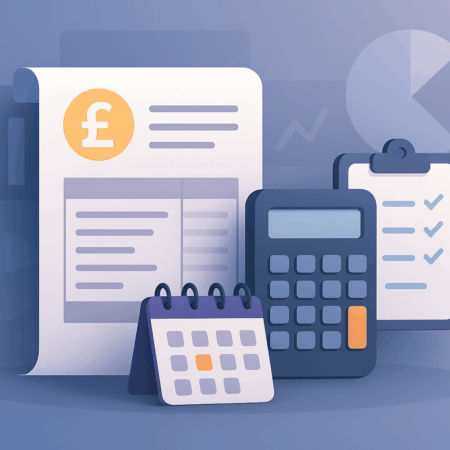Martin Lewis has highlighted some of the most competitive ISA rates available for over 60s in August 2025, helping savers make the most of their tax-free allowance. Those over 60 can currently secure up to around 4.87% AER on certain Cash ISAs, depending on whether they choose easy access or a fixed-rate option. These rates can offer a practical way to protect savings from tax and inflation while keeping funds secure.
For many over 60s, the choice between easy access and fixed-rate ISAs depends on whether flexibility or a higher guaranteed return is more important. Martin Lewis’s latest recommendations cover both types, with options from reputable UK banks and building societies. His guidance focuses on balancing interest rates, access needs, and FSCS protection.
This article explores his top ISA picks for August 2025, explains the main ISA types available to over 60s, and outlines how they can fit into a retirement savings plan. It also covers the current ISA allowance, tax-free benefits, and how to choose a provider that offers both security and value.
Martin Lewis’s Top ISA Rate Picks for Over 60s in August 2025

Martin Lewis, through Money Saving Expert, highlights several cash ISAs in August 2025 that offer competitive rates for savers aged over 60. His recommendations focus on accounts with strong annual equivalent rates (AER), clear terms, and reliable providers.
Overview of Recommended Providers
Lewis’s current list includes a mix of high street banks, challenger banks, and building societies. Examples include Castle Trust Bank and Cynergy Bank, both noted for consistent performance in fixed-rate ISAs.
He often features providers that have FSCS protection, giving savers up to £85,000 coverage per person. This ensures deposits remain secure even if the bank fails.
Some accounts are available for online opening only, while others can be set up in-branch or by post. This gives flexibility for those less comfortable with digital banking.
Lewis also tracks institutions that adjust rates quickly in response to market changes, which can benefit those seeking top returns without long waits for updates.
Key Interest Rates and Terms
In August 2025, easy access cash ISAs recommended by Lewis offer rates up to around 4.64% AER. These accounts allow withdrawals without penalties, but rates can change at any time.
Fixed-rate ISAs remain popular among over 60s wanting predictable returns. For example:
| Provider | Term | Rate (AER) | Notes |
|---|---|---|---|
| Castle Trust Bank | 1 year fix | 4.26% | Online only |
| Cynergy Bank | 2 year fix | 4.17% | Rate fixed until maturity |
Fixed accounts require leaving funds untouched for the full term. Early withdrawals often incur interest penalties, which can reduce returns.
Annual ISA allowances remain at £20,000, with all interest earned tax-free under current rules.
How Recommendations Are Chosen
Lewis bases his selections on rate competitiveness, account flexibility, and provider reliability. He compares products across the market, not just from major banks.
He considers whether rates are variable or fixed, the length of any fixed term, and how interest is paid (monthly or annually).
The recommendations also reflect feedback from Money Saving Expert readers and updates discussed on The Martin Lewis Podcast on BBC Sounds, Spotify, and Apple Music.
He avoids accounts with hidden fees or restrictive terms that could limit access to funds, which is particularly relevant for older savers managing retirement income.
Types of ISAs Available for Over 60s

Savers over 60 can choose between tax-free savings options that suit different risk levels and access needs. Interest rates, withdrawal flexibility, and investment risk vary depending on the type of ISA account selected.
Cash ISAs Explained
A Cash ISA works like a standard savings account but pays interest free from UK income tax. For the 2025/26 tax year, individuals can deposit up to £20,000 across their ISA accounts.
Over 60s often prefer easy access cash ISAs for flexibility. These allow withdrawals at any time without penalties, although rates are usually lower than fixed-term options.
Fixed-rate cash ISAs offer higher interest in exchange for locking funds for a set period, such as 1–5 years. Breaking the term early may result in lost interest.
Cash ISAs are covered by the Financial Services Compensation Scheme (FSCS) up to £85,000 per provider, offering security for savers who prioritise capital protection over higher returns.
Stocks and Shares ISAs for Older Savers
A Stocks and Shares ISA invests in assets such as shares, bonds, and funds. Returns are free from capital gains tax and income tax.
They carry investment risk, meaning the value can rise or fall. For over 60s, this risk may be less suitable if they need short-term access to funds or cannot tolerate capital loss.
However, those with longer-term horizons or other income sources may use this ISA type to seek higher returns than cash savings. Diversification across sectors and asset classes can help manage volatility.
Charges vary by provider and can reduce net returns. Comparing platform fees, fund charges, and available investment options is essential before opening an account.
Comparing ISAs and Bonds
While ISAs offer tax-free interest or investment growth, savings bonds are taxable unless held within an ISA wrapper.
Cash ISAs often provide lower rates than some fixed-term bonds, but the tax-free status can make them competitive for higher-rate taxpayers. Bonds may offer fixed returns for a set term but usually restrict early withdrawals.
Stocks and Shares ISAs differ from corporate or government bonds because they can hold a range of investments, not just fixed-income products. However, bonds can also be included within a Stocks and Shares ISA to combine income stability with tax efficiency.
Best Easy Access Cash ISA Rates in August 2025
Easy access Cash ISAs in August 2025 offer interest rates of up to around 5.07%, with several providers competing closely. Many accounts allow withdrawals without penalty, making them suitable for savers who want flexibility alongside tax-free interest.
Top Easy Access Providers
The highest-paying easy access Cash ISA currently comes from Trading 212, offering 5.07% AER with monthly interest. Close behind is Tembo at 4.80% AER, also with monthly interest options.
Other competitive rates include Zopa at 4.67%, Moneybox at around 4.65%, and Marcus by Goldman Sachs at 4.60%. The Post Office and Leeds Building Society also feature in the top tier, typically between 4.50%–4.60%.
| Provider | Rate (AER) | Interest Paid | Access Type |
|---|---|---|---|
| Trading 212 | 5.07% | Monthly | Easy Access |
| Tembo | 4.80% | Monthly | Easy Access |
| Zopa | 4.67% | Monthly | Easy Access |
| Moneybox | 4.65% | Monthly | Easy Access |
| Marcus by Goldman Sachs | 4.60% | Monthly | Easy Access |
Features and Flexibility
Easy access Cash ISAs allow savers to withdraw funds without losing interest, though some accounts limit the number of withdrawals per year. Others, like Trading 212 and Zopa, have no set withdrawal limits.
Interest is usually calculated daily and paid monthly or annually. Monthly interest payments can be useful for those who want regular income from their savings.
Most accounts can be opened and managed online or via an app. Providers such as Moneybox and Trading 212 are app-based, while Marcus and the Post Office also offer telephone and online servicing.
Eligibility and Minimum Deposits
Most easy access Cash ISAs are available to UK residents aged 16 or over. However, some providers, such as Leeds Building Society, require applicants to be at least 18.
Minimum deposits vary. Marcus by Goldman Sachs and Trading 212 often allow opening with as little as £1, while others, like Leeds Building Society, may require £100 or more.
The annual ISA allowance for the 2025/26 tax year remains £20,000, which can be split across different ISA types. Transfers from other ISAs are usually accepted, but some providers only accept transfers in at account opening.
Best Fixed Rate Cash ISAs for Over 60s
Fixed rate cash ISAs can offer higher interest than easy access accounts by locking money away for a set term. Rates vary by provider and term length, and early withdrawals often reduce returns through penalties or loss of interest.
Top Fixed Rate Deals
Several banks and building societies currently offer competitive fixed rate cash ISAs for savers aged over 60. UBL UK has been among the leaders for multi-year terms, while Santander and Progressive Building Society also provide strong options for those willing to commit funds.
Rates in August 2025 range from around 4.3% to 5.2% AER depending on the term. The highest rates are usually for three- to five-year terms, but these require longer commitments.
| Provider | Term Length | AER (Approx.) | Access |
|---|---|---|---|
| UBL UK | 3 Years | 5.20% | No withdrawals |
| Santander | 2 Years | 4.45% | Limited withdrawals with penalty |
| Progressive Building Society | 1 Year | 4.31% | No withdrawals |
Choosing the right deal depends on how long the saver can lock away funds without needing access.
One-Year and Two-Year Fixed Options
Shorter fixed terms often suit over-60s who want certainty without committing for too long. One-year fixed rate ISAs offer lower rates than longer terms but give quicker access to funds when the term ends.
A one-year term in August 2025 typically pays between 4.2% and 4.35% AER. Providers such as Progressive Building Society and some high street banks are active in this space.
Two-year fixed rate ISAs can increase returns slightly, with rates around 4.4% to 4.5% AER. Santander’s two-year product is notable for allowing limited withdrawals, though penalties still apply.
These options balance interest gains with flexibility, making them popular among those who may need funds in the near future.
Penalties and Withdrawal Terms
Fixed rate ISAs usually restrict access to funds before the term ends. If withdrawals are allowed, they often come with penalties such as loss of 90 to 180 days’ interest.
Some accounts, like those from UBL UK, do not permit withdrawals at all during the term. Others, such as certain Santander products, allow partial access but reduce interest earned.
It is important to check the provider’s terms before opening an account. Early access rules vary, and penalties can significantly reduce the effective return.
Would you like me to also prepare the easy access ISA section in the same style so the article flows consistently?
ISA Allowance and Tax-Free Benefits
In the 2025/26 tax year, individuals can save up to £20,000 in an ISA without paying tax on the interest earned. This limit applies across all ISA types, and careful management ensures the full benefit of the tax-free allowance.
£20,000 Allowance Explained
The ISA allowance for the 2025/26 tax year is £20,000 per person. This is the maximum amount that can be deposited into ISA accounts between 6 April 2025 and 5 April 2026.
This allowance can be split between different ISA types, such as Cash ISAs, Stocks and Shares ISAs, and Innovative Finance ISAs. However, the total across all accounts must not exceed £20,000.
For example:
| ISA Type | Amount Deposited | Counts Towards £20,000 Limit? |
|---|---|---|
| Cash ISA | £10,000 | Yes |
| Stocks and Shares ISA | £5,000 | Yes |
| Innovative Finance ISA | £5,000 | Yes |
Those aged over 60 are subject to the same allowance as other adults. The key benefit is that interest or returns within the ISA remain free from Income Tax and Capital Gains Tax.
Tax-Free Interest Rules
Interest earned in a Cash ISA is completely tax-free, regardless of the amount. This means savers can exceed the Personal Savings Allowance without triggering a tax charge.
For a basic rate taxpayer, the Personal Savings Allowance is £1,000 per tax year. Higher rate taxpayers have only £500. By using an ISA, savers avoid these limits entirely.
The tax-free status applies for as long as the funds remain in the ISA. Even if interest rates rise or balances grow, no tax will be due on the returns. This makes ISAs particularly attractive for those with larger savings balances.
It is important to note that withdrawing money from an ISA does not affect the tax-free status of interest already earned, but it may reduce the remaining annual allowance if the account is not flexible.
Transferring and Managing ISAs
ISA transfers allow savers to move funds between providers to secure better interest rates without losing tax-free benefits. The transfer must be arranged by the new provider to maintain ISA status.
Cash ISAs can be transferred in full or in part. However, if transferring funds from the current tax year’s allowance, the whole amount must be moved.
Some accounts have fixed terms or withdrawal restrictions. Breaking these early may result in interest penalties, so checking terms before transferring is essential.
Regularly reviewing ISA rates is important, as providers may reduce interest on variable accounts. Those over 60 often benefit from moving to higher-paying ISAs when rates improve, ensuring their savings continue to grow efficiently.
Safety, Protection, and Choosing the Right Provider
Savings held in ISAs are only as secure as the institutions that manage them and the protections in place. Understanding how deposit protection works, how to assess a provider’s stability, and how accessible your money will be is essential before committing to any account.
Financial Services Compensation Scheme (FSCS)
The Financial Services Compensation Scheme (FSCS) protects eligible deposits in UK banks, building societies, and credit unions. It covers up to £85,000 per person, per authorised institution. This means that if the provider fails, the FSCS will reimburse savings up to that limit.
It is important to check whether a provider is FSCS-authorised. Some banking brands share the same banking licence, meaning the £85,000 protection applies across all accounts under that licence, not per brand.
For example:
| Provider | Licence Holder | FSCS Limit Applies To |
|---|---|---|
| Halifax | Bank of Scotland plc | Combined Halifax & Bank of Scotland accounts |
| Nationwide | Nationwide Building Society | Nationwide only |
Those with more than £85,000 in savings may wish to split funds between separate FSCS-protected institutions to ensure full coverage.
Assessing Banks and Financial Institutions
Before opening an ISA, it is sensible to review the financial health and reputation of the provider. Large, well-established banks and building societies often have longer track records, but smaller providers can offer competitive rates.
Key checks include:
- Regulatory status – Confirm the provider is regulated by the Financial Conduct Authority (FCA) and Prudential Regulation Authority (PRA).
- FSCS protection – Ensure deposits qualify under the scheme.
- Credit ratings – Independent ratings from agencies such as Moody’s or Fitch can indicate stability.
Customer service performance is also worth reviewing, particularly for those who value quick resolution of account issues.
Account Management and Access
How an ISA can be managed affects convenience and suitability. Some providers offer online-only access, while others allow branch, phone, and postal management. Over-60s may prefer providers with multiple access options.
Check withdrawal rules carefully. Fixed-rate ISAs often restrict access until maturity or impose interest penalties for early withdrawals. Easy-access ISAs allow withdrawals at any time but usually have lower rates.
Security features such as two-factor authentication, secure messaging, and fraud monitoring should also be considered. These measures help protect accounts from unauthorised access while maintaining ease of use.
ISAs in Retirement Planning for Over 60s
For those over 60, ISAs can provide a tax-efficient way to hold savings alongside pensions and other investments. The ability to earn interest or returns without income tax or capital gains tax can help preserve retirement income and improve flexibility in managing withdrawals.
Role of ISAs in Retirement Savings
Cash ISAs for over 60s often appeal to those seeking low-risk, accessible savings. They allow savers to hold up to £20,000 per tax year without paying tax on interest earned. This can be valuable when pension withdrawals might push income into a higher tax band.
Unlike pensions, ISA withdrawals do not affect taxable income. This makes them useful for supplementing retirement spending without impacting personal allowance or triggering pension tax charges.
Some retirees use ISAs to keep an emergency fund separate from longer-term investments. Easy access ISAs provide liquidity, while fixed-rate ISAs can lock in higher interest for a set term.
| ISA Type | Key Benefit | Typical Use in Retirement |
|---|---|---|
| Easy Access | Withdrawal flexibility | Emergency or short-term funds |
| Fixed Rate | Higher guaranteed interest | Planned medium-term spending |
| Stocks & Shares | Potential for higher growth | Longer-term investment horizon |
Pros and Cons for Older Savers
Advantages:
- Tax-free interest on savings up to the annual allowance.
- No age limit for opening or contributing to an ISA.
- Flexibility in choosing between cash, stocks and shares, or a mix.
Disadvantages:
- Interest rates on cash ISAs may not always beat inflation.
- Fixed-rate ISAs often have penalties for early withdrawal.
- Stocks and shares ISAs carry investment risk, which may not suit all retirees.
For many over 60s, the balance between accessibility and return is key. Those relying heavily on savings for income may prefer lower-risk cash ISAs, while others with secure pensions may accept more risk for potential growth.
Maximising Long-Term Benefits
To make the most of ISAs in retirement, savers should compare rates regularly. As of August 2025, some easy access cash ISAs offer around 4.6%, while fixed rates can be slightly lower but guaranteed for the term.
Using the full annual allowance each year can steadily build a substantial tax-free savings pot. Couples can double this by each holding their own ISA, potentially sheltering up to £40,000 annually from tax.
Some retirees blend ISA types — keeping part in an easy access account for short-term needs and part in a fixed-rate or stocks and shares ISA for potential growth. This helps maintain flexibility while aiming for better returns.









